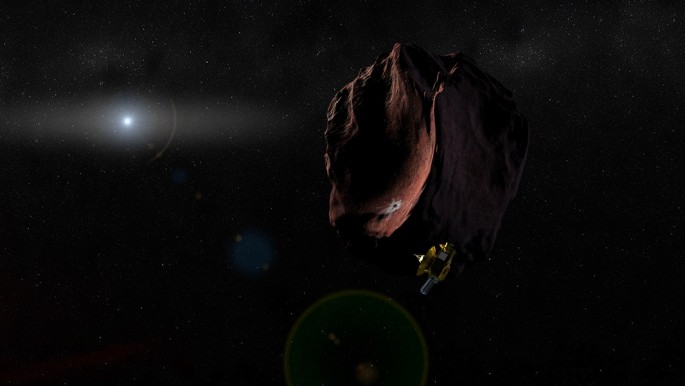NASA's New Horizons probe completed a historic flyby of the dwarf planet Pluto last July 2015, providing unprecedented views of the planet and crucial data. However, New Horizons is far from over in exploring the outer reaches of the solar system, as NASA officially announced an extension of the probe's mission.
The next cosmic object target of the probe is 2014 MU69, an icy space rock located some 1 billion miles beyond Pluto and into the Kuiper belt, which is a massive region in the solar system that is filled with smaller bodies such as dwarf planets, comets, asteroids and space rocks that are considered as primordial remnants of the solar system.
This particular Kuiper belt object is originally from the early stages of the solar system, when planets are being formed since astronomers detected it two years back. This icy space rock is estimated to be around 13 to 25 miles across, as scientists believe that this could hold clues about the origins of the building blocks of life in the solar system.
With this new mission, scientists will be able to further study planetary accretion which is how a planet begins to form, as cosmic materials are orbiting and collide into each other, that will eventually grow into a larger body.
According to Alex Parker of the Southwest Research Institute who is also a scientist for the renewed New Horizons mission of 2014 MU69, this cosmic object is also located in a region known as the "Cold Classical" Kuiper belt.
These objects in the cold classical region of the asteroid belt are considered as surviving remnants from disk material from planet accretion of the planets in the solar system. These objects also avoided colliding with violent planet forming processes at a time when the solar system was just in its infancy.
Parker says that this makes 2014 MU69 an ancient relic from an era during planet formation, which is also the closest evidence that scientists will be able to investigate and explore up close.
According to principal investigator for New Horizons, Alan Stern of the Southwest Research Institute, 2014 MU69 is also considered to be the most pristine object that will be visited by any space mission, since it has been existing for 4 billion years in the coldest regions of the solar system.
The New Horizons spacecraft is expected to rendezvous with 2014 MU69 by January 1, 2019.



























